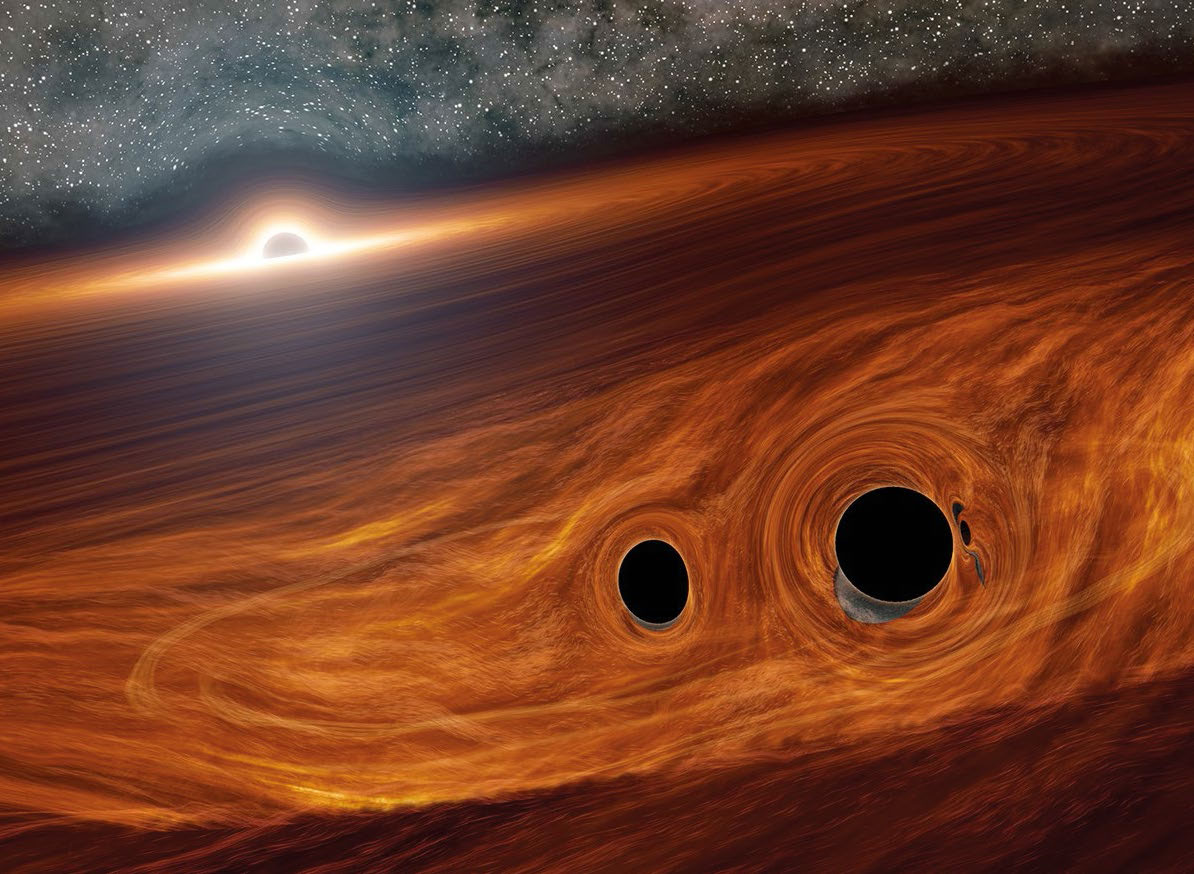Black holes aren’t supposed to make flashes of light. It’s right there in the name: black holes. Even when they slam into each other the massive objects are supposed to be invisible to astronomers’ traditional instruments. But when scientists detected a black hole collision last year, they also spotted a weird flash from the crash.

An artist’s depiction of two black holes merging within the disc of a supermassive black hole, later releasing a burst of light
© Caltech/R. Hurt (IPAC)
On 21 May 2019 Earth’s gravitational wave detectors caught the signal of a pair of massive objects colliding, sending ripples cascading through space-time. Later, an observatory, the Zwicky Transient Facility (ZTF), caught a blast of light. As scientists looked at the two signals they realised both came from the same patch of sky, and researchers started wondering whether they had spotted a visible black hole collision.